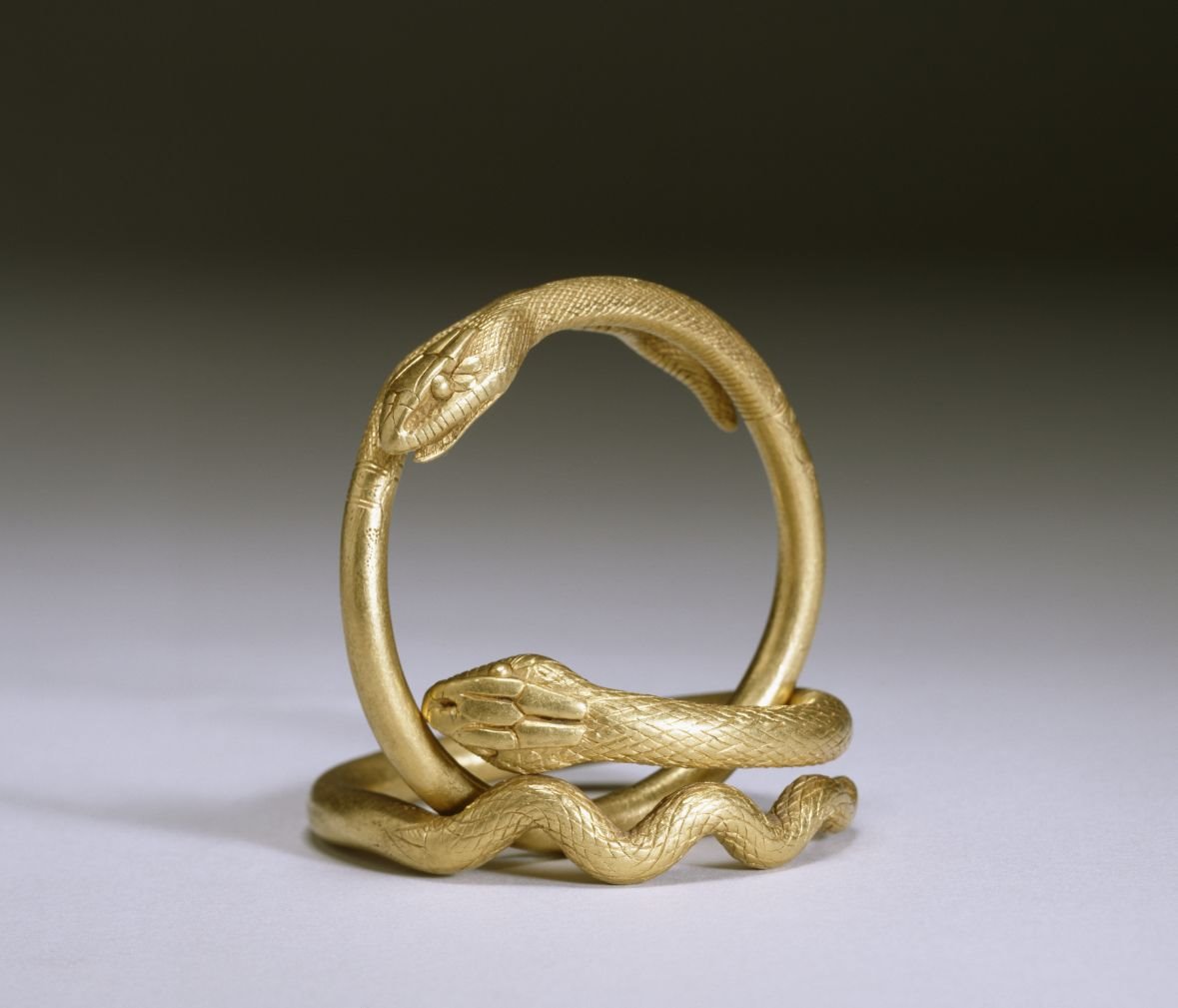Snake Bracelet
100 B.C.–A.D. 100
Roman High Class Snake Bracelets (Alternate Title)
Description - Spiral bracelets in the form of snakes were very popular in the Hellenistic period. This type of bracelet was worn coiled around the wearer's arm, the continuation of a fashion known earlier in the Classical period. Such slip-on bracelets were worn in pairs, on the wrists or the upper arms (compare, for example those worn by the woman on this grave relief).
On this single spiral example, the goldsmith carefully recreated the sinuous motion of the snake's curving tail. Incised crosshatching represents the texture of the scales on the snake's head and tail.
In the Hellenistic period, gold made available by new territorial conquests flooded the Greek world. Combined with social and economic changes that created a wealthy clientele with a taste for luxury, this availability led to an immense outpouring of gold jewelry to meet the demand.
Social and economic changes during the Hellenistic period created a wealthy clientele eager to display their riches. As a result, the demand for gold jewelry increased.
On this funerary relief, a woman reaches out to lift the lid of a jewelry box held by an attendant. She wears numerous snake bracelets, presumably made of gold, that signal her wealth.
Spiral bracelets in the form of snakes, worn coiled around arms or wrists and often in pairs, were fashionable in this era.
Snakes were frequent and highly symbolic in ancient myths and art. Across the Mediterranean, the Egyptians, the Greeks, and later the Romans, conferred upon them many different meanings, particularly rebirth, transformation, healing, and immortality due to their shedding skin. Because of this, snake bangles and other adornments were seen to protect the wearer.
Customer Testimonials
Absolutely stunning, a true piece of history!
"This jewel transformed my entire outfit!"


"I’ve never received so many compliments!"


"A timeless piece that tells a story!"


